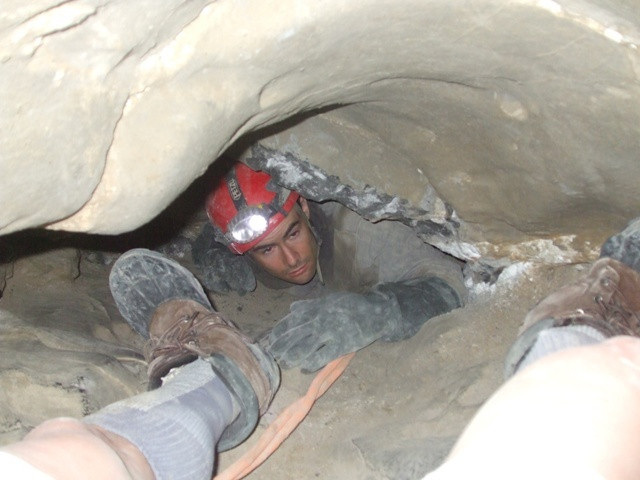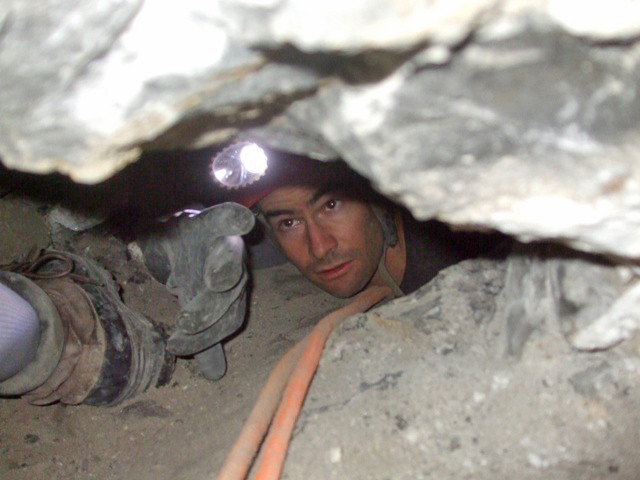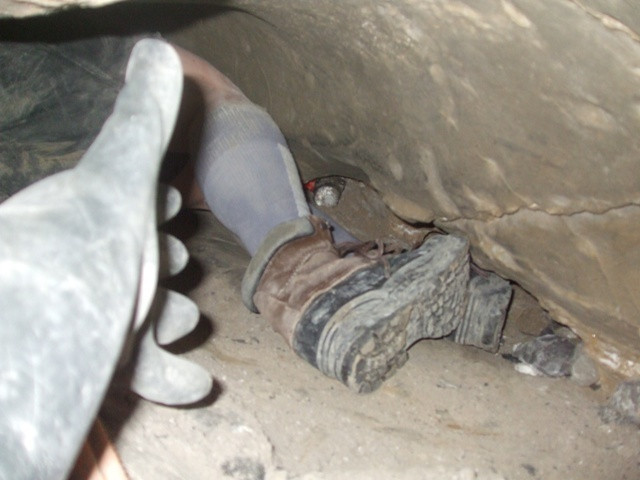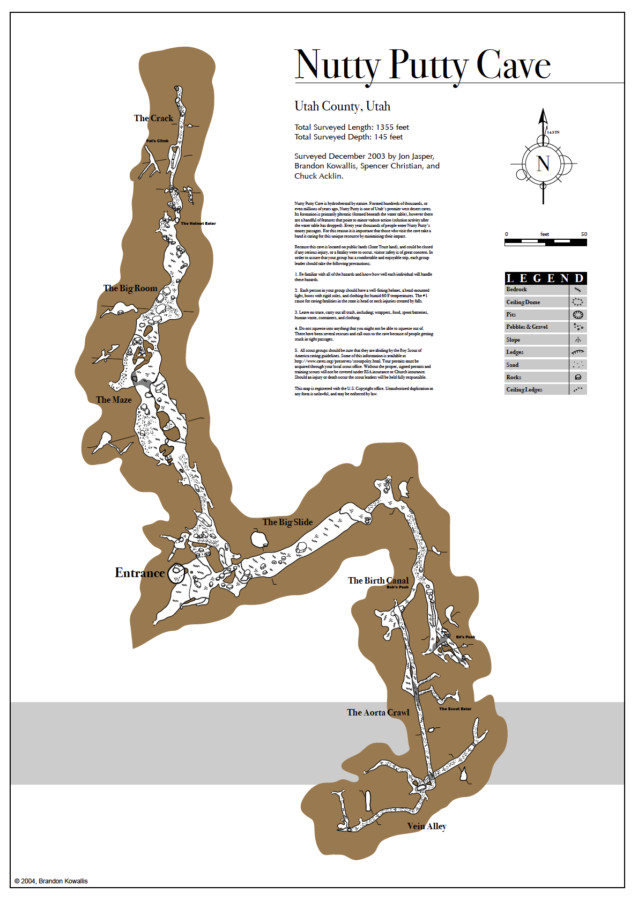Thanksgiving weekend of 2009 took a dark turn when I was called to assist in the Nutty Putty Cave rescue of John Edward Jones. As a caver familiar with the intricacies of cave systems, I joined the extensive efforts, ultimately becoming the last person to see John alive, though he was largely unconscious by the time I reached him. In the years since this tragic event, I’ve received countless inquiries, particularly recently due to resurfaced viral videos, prompting me to share my firsthand account and address the questions I am equipped to answer about the John Edward Jones Cave incident.
This is my personal recollection, written immediately after the unsuccessful rescue while the details were still vivid. It’s crucial to understand that this is just one perspective, from someone who arrived as the rescue operation was already deeply underway. For a more comprehensive understanding, I highly recommend reading Lindsay Whitehurst’s detailed two-part article in the Salt Lake Tribune, offering a broader view of the events at Nutty Putty Cave.
WARNING: The following account contains descriptions of John Jones’ condition, his passing, and post-mortem circumstances which some readers may find disturbing. Out of respect for John and his family, I have strived to maintain as much generality as possible while still accurately portraying the immense challenges we faced during this difficult rescue in Nutty Putty Cave.
Nutty Putty Rescue Report
Written for SAR on November 25, 2009
The initial call reached me around 9:00 or 10:00 AM from Spencer Christian and Rodney Mulder, informing me of an ongoing rescue at Nutty Putty Cave. They inquired about my availability to assist. After gathering some initial details, it seemed that there were already sufficient personnel on site to manage the situation. I conveyed to Spencer and Rodney that should the rescue extend for a prolonged period, and if exhaustion set in, requiring additional small-bodied cavers, I would be ready to join.
Approximately five hours later, Spencer contacted me again, requesting my presence. He indicated that fatigue was becoming a factor and that smaller cavers were indeed needed. I departed from work around 4:00 PM, quickly stopped home to collect my caving equipment, and then proceeded to Nutty Putty Cave. Upon arriving at the site around 6:00 PM, I was assigned to the next team scheduled to enter the cave, commencing at approximately 6:30 PM.
Reaching the main passage at the entrance of the Birth Canal, I observed teams working on a 4 to 1 haul system that had been established. I assisted with this system for about five minutes. It soon became apparent that the system was not functioning effectively [^1], and the team attending to John Jones (the trapped individual) needed to be relieved. Consequently, the cavers who had been with John began to exit the passage.
During their exit, I spoke with Andy Armstrong. I inquired about John’s condition, and Andy’s report was concerning. He explained that John was rapidly deteriorating, fluctuating in and out of consciousness, and had begun experiencing hallucinations, speaking of seeing angels and demons.
Once the previous team had exited, we decided on a course of action. I would proceed into the passage first to assess the situation firsthand and explore any potential strategies for extracting him. Debbie would then follow to work directly with John, as she had already spent time with him and believed he might find comfort in her familiar presence.
I moved ahead into the narrow passage. Just before reaching John’s location, there’s an exceptionally tight crawl – perhaps 18 inches wide and 8 to 10 inches tall – requiring a sharp 90 to 120-degree turn, which you must enter feet first. Navigating this restriction demands extreme care, as your feet are out of sight until you are through the tightest point. As I carefully wormed my way through, my feet encountered something soft – John’s feet. I felt a slight movement, immediately lifted my feet, and shifted horizontally into the fissure.
John’s feet were positioned approximately 6 feet beyond the constriction. I managed to maneuver myself to his side and descend into the 4-foot-wide fissure. After securing myself by wedging my body into a narrower section of the crack, I began speaking to John, introducing myself and asking about his condition. There was no response. I shifted my position slightly and tapped him on the leg. I could hear his breathing – deep, gurgling breaths, sounding as though his lungs were filling with fluid. Then, his feet shifted again, appearing to be a frantic attempt to maneuver his legs out of the crack he was trapped in. This kicking motion ceased abruptly, and he seemed to slip into unconsciousness [^2]. I continued to tap his legs and hip, trying to elicit a response, but there was none.
From this vantage point, I spent several minutes carefully examining the passage, John’s positioning, and the existing rigging to determine how we might proceed with his extraction. The situation appeared extremely precarious. I questioned whether moving him further was even feasible. We could persist with the haul system, but it seemed he could only be lifted another foot or two in his current position due to the anchor point of the webbing around his knees. Beyond this limited lift, his feet would strike the ceiling. Once his feet reached the ceiling, there was no way to pivot him into a horizontal position. He would have to manage that himself, but he was now unconscious. Even if we could somehow maneuver him horizontally, he would still face the most constricted sections of the passage that had trapped him initially. If he were conscious and at full strength, there might have been a sliver of a chance. But even then, it looked incredibly grim. Even for me, weighing a mere 125 pounds, exiting the passage was a struggle. At the bend with the tightest restriction, I had to contort my body in inventive ways to squeeze through. Extracting a 210-pound, unconscious person seemed virtually impossible.
The other option I considered was using a jackhammer to widen the crack around him. This would involve removing some rock protrusions and expanding the tightest spot, allowing us to pull him straight out. This approach would undoubtedly result in severe injuries, likely multiple broken bones and lacerations, but if all else failed, it seemed like the most viable, albeit drastic, measure.
Between my exit from the passage and Debbie taking my place, a request came to bring a radio to John so his family could speak to him. I believe it was his father, mother, and wife who spoke, expressing their love, prayers, and his father giving him a blessing. His wife conveyed a sense of peace, assuring him that everything would be alright. This communication lasted about 5 to 10 minutes before I indicated that we needed to resume efforts to extract him from the john edward jones cave.
At this juncture, I crawled out to allow Debbie to move past and assess the situation herself. However, as she reached the tight constriction, both of her legs cramped severely, preventing her from proceeding further down the passage. It was at this point that I decided to attempt using the jackhammer. We waited for it to be brought to our location, and then I carried it down to where John was positioned. The tool was considerably heavier than I had anticipated. Holding it aloft while wedged in the crack demanded every ounce of my strength. Even then, achieving a good angle on the rock was problematic due to the confined space and my limited mobility and positioning. I managed only three attempts at a small lip of rock just below John’s foot. Due to the awkward angle, the hammer bit kept sinking into the sand beside the rock lip instead of effectively chipping away at the rock. Shifting my position didn’t improve matters; in any other stance, I couldn’t properly handle the jackhammer because of its length. The space between me and the rock needing to be drilled was only about 2.5 feet, while the jackhammer itself was roughly 3 to 4 feet long. Maintaining such an awkward position while operating the heavy tool quickly exhausted me.
Recognizing the limitations of the jackhammer, I requested a smaller tool. However, none seemed to be available, and even if there had been, it was uncertain whether a smaller hammer drill would be effective against the solid limestone walls of Nutty Putty Cave. We retreated back to the Birth Canal area for a quick meeting to reassess and decide on the next course of action.
By this point, it seemed that the drills were encountering issues, and the only remaining option for drilling was to utilize a compressed air hammer. It took approximately an hour or so to get the air hose routed down into the cave to power the tool. While we waited, we considered that perhaps the most effective approach would be to widen the hole from the top down, working towards John rather than away from him. Once the compressed air drill arrived, Debbie, Max, and I spent about an hour and a half chipping away at the passage a few feet above the tight spot – approximately 7 to 9 feet away from John. Softer rock sections broke apart relatively easily, but the harder formations required an immense amount of effort. The primary difficulty was the extremely limited space, making it hard to strike the rock at an effective angle. Often, instead of chipping off the desired rock protrusion, we would end up cutting a hole straight into the cave floor.
After an hour and a half of strenuous work, we had only managed to remove an 18” x 4” section of rock from the ceiling and floor. And this was in a slightly wider section of the passage. From that point onward, the cave became even tighter. In these narrower sections, if you were lying down, weighing just 125 pounds, you had only about 3 to 6 inches of space above you. This provided very little room to maneuver a jackhammer or even to find an effective angle for chipping. To continue this process, or even if we switched to micro-blasters, my estimation was that it would take anywhere from 3 to 7 days to reach John’s location. Once again, we regrouped to determine the next plan of action for the rescue in john edward jones cave.
By now, it was nearing midnight, and we were asked to check John’s vital signs. A smaller paramedic was sent in to see if he could reach John. In case the paramedic couldn’t fit, he instructed me on how to use the stethoscope and thermometer and where to check for a pulse. It was 11:30 PM when we departed from the group near the Birth Canal and ventured back down the passage. Reaching John took about 15 minutes. I went first to check, in case the paramedic couldn’t fit through the tight restrictions of john edward jones cave. I first attempted to use the stethoscope, managing to insert it about 3 inches up and to the right of his navel. I didn’t detect a distinct heartbeat, only some rustling, fluttering sounds, likely due to my own trembling as I tried to steady myself in the awkward position. I then wedged my hand between the rock and pressed as far up his torso as possible to feel for breathing. I didn’t believe I felt anything, but again, it was difficult to be certain as I was shaking from the effort of maintaining my position. His chest, pressed against the rock, felt warmer than the rest of his body and was damp with sweat. However, everywhere else, his body temperature was close to the temperature of the cave walls. I then removed his shoe and attempted to take his temperature. The thermometer displayed nothing, which the paramedic later explained was because the temperature was below the device’s measurement range. As I removed his shoes and moved his feet, I noticed that his feet and legs were considerably stiffer than they had been earlier. It was difficult to move his leg more than a few inches.
I relayed my findings to the paramedic waiting above and then crawled out to allow him to see if he could squeeze in. He managed to reach a point where he could feel John’s feet and confirm that he had passed away. John Edward Jones was pronounced dead at 11:52 PM, as I recall.
At that point, we decided to return to the surface for a debriefing to discuss our next course of action. As everyone else began to head out, the paramedic and I went back into the passage to take photographs of the passage and John’s position within john edward jones cave.
With John now deceased, the effort required to remove his body would be exponentially more complex. His body, now stiffening due to rigor mortis, would no longer be flexible enough to navigate the bend in the tight passage above his feet without significant enlargement of the passage. This process of alteration could take days or even weeks using a hammer drill, and possibly slightly faster with micro-blasters. Any swelling of the body would make extraction from the crack he was wedged in virtually impossible until the swelling subsided. There was no way to secure ropes to his body except possibly at his feet. After a few days, the decomposition process would necessitate hazmat suits and respirators for anyone working with the body, which would severely limit the working time of any rescuers due to heat exhaustion. Typically, in pants and a short-sleeve shirt, a person becomes drenched in sweat within 10 to 15 minutes of strenuous activity and can work for about 30 minutes to an hour before needing a break. In a hazmat suit and respirator, work periods would likely be reduced to 5-10 minutes before requiring rest, not to mention the further restriction on mobility. The prospect of body recovery appeared extremely bleak [^3].
Commentary
[^1]: The 4 to 1 haul system failed due to the numerous twists and turns in the cave passage between the spacious area where the hauling team was positioned and John’s location. The cumulative friction, even with pulleys in place, became so significant that it rendered the haul system ineffective.
[^2]: This moment, when his frantic movements ceased and he drifted into unconsciousness, likely marks the time of John’s passing in john edward jones cave.
[^3]: Ultimately, after exhaustive consideration of the risks to rescuers and the immense difficulties involved, the decision was made that attempting to remove the body was too hazardous. To this day, Nutty Putty Cave remains sealed and serves as the final resting place of John Jones, a decision made out of respect for the fallen caver and to prevent further tragedies in the john edward jones cave.
Below is a rescue map I created after the incident. Jon Jasper, Spencer Christian, Chuck Acklin, and I had mapped the cave in 2003, and we had surveyed the very passage where John Jones became trapped. I utilized this survey data to generate two profile views illustrating John’s entrapment location and his position within john edward jones cave. I have also included photos from the rescue to provide a visual context of the area.
 Nutty Putty Rescue Map
Nutty Putty Rescue Map
Photos from the Rescue
 Rescuers at the staging area outside the entrance.
Rescuers at the staging area outside the entrance.
Rescuers at the staging area outside the entrance of john edward jones cave.
 This is me and the legs of the paramedic in the passage leading down to where John is trapped.
This is me and the legs of the paramedic in the passage leading down to where John is trapped.
This photo shows me and the legs of the paramedic in the passage leading down to John’s entrapment location within john edward jones cave. We are positioned between survey stations D5 and D6 on the map illustration above. You can see evidence of our attempts to jackhammer the passage. Notice the passage height is barely taller than the paramedic’s boots, illustrating the incredibly tight confines of john edward jones cave.
 Me between D7 and D9 just above John.
Me between D7 and D9 just above John.
This image captures me between survey stations D7 and D9, directly above John in john edward jones cave. I am demonstrating the extreme tightness of the passage by touching both the ceiling and floor simultaneously with my hand.
 Looking at the paramedic’s feet from my perspective, between D7 and D9 just above John.
Looking at the paramedic’s feet from my perspective, between D7 and D9 just above John.
Looking down at the paramedic’s feet from my vantage point, situated between survey markers D7 and D9, just above John in john edward jones cave. In this photo and the preceding one, my feet would have been positioned directly above John. Again, I am showing how I can touch both the ceiling and floor of john edward jones cave simultaneously to emphasize the restrictive nature of the passage.
Map
Here is the complete map of Nutty Putty Cave that I drafted in 2003. It is important to note that John Jones was not trapped in the area known as the Birth Canal, but rather in the Ed’s Push section of john edward jones cave. However, he would have passed through the Birth Canal to reach Ed’s Push. For those interested in a more detailed view, a high-resolution PDF version of this map is available for personal use at Cave Maps.
 Nutty Putty Cave Map
Nutty Putty Cave Map
Nutty Putty Cave Map © 2004 Brandon Kowallis – A high-resolution version of this map can be purchased by navigating to “Maps” in the website menu. This map provides a complete overview of john edward jones cave.
Animation of the Area Where John is Stuck
This animation was created in collaboration with us to produce a scale model of the section of john edward jones cave where John was trapped. While it may not possess the pinpoint accuracy of a lidar scan, leading to some areas appearing wider than they are in reality, it is the most accurate visual representation available, especially considering the animator utilized our survey data for its creation.
The Nutty Putty Entrance Today
This short video, filmed with my phone, shows the entrance to Nutty Putty Cave as it appears today, a silent reminder of the john edward jones cave tragedy:
Recent Salt Lake Tribune Short
The Salt Lake Tribune recently interviewed me about the Nutty Putty Cave incident. You can read the accompanying article here: 15 years after a man died in the Nutty Putty Cave, his family and rescuers still struggle to escape the darkness. This article offers further insights into the lasting impact of the john edward jones cave tragedy.
Tight Squeezes
To provide a better understanding of the challenges posed by tight cave passages like those in Nutty Putty, I have included two videos filmed during a survey of a desert cave in Utah. The first video shows Mitch attempting a tight downward squeeze. In the second, I am exiting a passage I explored to assess its potential, which unfortunately dead-ended about 12 feet below. For many, passages like these represent a nightmare scenario, but for experienced cavers, they are a common, and even enjoyable, aspect of cave exploration. These videos offer a glimpse into the realities of navigating tight spaces similar to where the john edward jones cave accident occurred.
Comment about Comments Below
I deeply appreciate the kind and encouraging words, as well as the thoughtful questions in the comments section below. However, due to family and work commitments, alongside my passion for caving, climbing, and other pursuits, my time for responding to lengthy question threads is limited as of 9/27/24. If you have questions, please review the existing comments to avoid repetition and focus on asking questions that haven’t been previously addressed and are not speculative or about events prior to my arrival. I will approve all family-friendly comments, but please allow up to a week for approval.
If I release any further information, such as a video update, I will notify my email list subscribers. You can subscribe to my mailing list on this page. You can also follow me on YouTube for notifications of any new content.
Thank you again for your kindness and understanding regarding the events at john edward jones cave.
